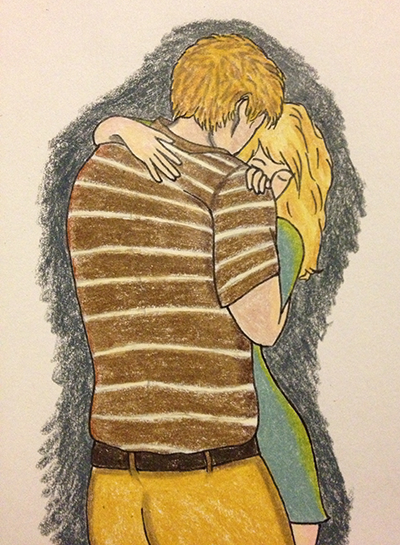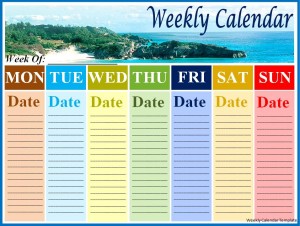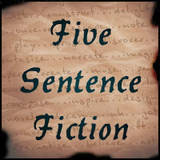by Mayumi-H | Jan 23, 2013 | Fearless, Process
Your story’s world is a full one. The story itself may be about only one or two main characters, but those people have family, friends, acquaintances, and enemies. And those people have beliefs, fears, experiences all their own. And, even if the reader never discovers these facets in full detail, it’s important for you to know who those people are. From the way they dress to the way they dance, their dietary habits or exercise routines, what they do for work and play, the magazines they read and the television programs they watch…all of these details will help you solidify in your head who each person is, and – in turn – make it easier for your readers to differentiate each character outside of name alone.
You don’t have to do all of these, of course (your time is likely better spent in the guts of your story), but pick a few for each of your characters, to help realize them more fully. Music is a great way to do this.
You’ve heard people say, “This is my song,” when they hear a particular tune. The same holds for the characters in your story. Whether a song describes that character, or it’s their own favorite song, music provides a way for you to make your world bloom. The best part? Unlike plotting your story or designing your world, giving your characters their own songs doesn’t have to take very much work at all!

If you hear a song on the radio (or on your mp3 player of choice), and you’re reminded of a particular character or story moment, set it aside in your mental list of story details. Listen to that song when you’re on your commute, doing your morning exercises, or washing the dinner dishes: this keeps you in-tune with your story and characters even while you have to do the necessary chores of your life. And keeping your story close to you this way (even if you don’t get the chance to write as much as you might like during the day) will help keep it immediate, so you don’t lose too much momentum while you’re, you know, living.
For example, whenever I hear Kevin MacLeod’s lovely piano track for “With the Sea”, it instantly puts me in the mood to write the about quaint coastal fishing village where my novel takes place. When I hear that opening guitar riff for “Bad Reputation” by Joan Jett, I am ready to write Ross’s confident swagger. And, when Pete Townshend sings about how to “Let My Love Open the Door”, Amber’s dimpled smile comes immediately to mind.
Some writers like to work in silence, so, for those of you who do, I won’t impose upon you the suggestion to create a playlist for your story. For those of you who enjoy a bit of music while you plot and pace, though, I’ve got to ask:
What’s your character’s theme song?
by Mayumi-H | Jan 19, 2013 | Fearless, Short Stories
It’s a threesome this week (no, not that kind of threesome, silly!), as I attempt to combine prompts from Julia’s 100-Word Challenge for Grown-Ups, Lillie McFerrin’s Five Sentence Fiction, and The Daily Post Writing Challenge!
Julia’s prompt this week (week 73) is “…the notes from the piano…“ Since we are to incorporate said phrase, we’re allowed to go to 105 words instead of the standard 100.
Lillie’s prompt this week is FORGOTTEN, and we’re to construct a story around that theme, in five sentences. We don’t have to use the prompt word itself.
The Daily Post’s prompt this week is Starting Over. There are no constraints on word or sentence count.
Let’s recap: 105 words, five sentences, with themes FORGOTTEN and Starting Over, and including the phrase “…the notes from the piano….”
This is my first time trying to pull together three different prompts around one idea, but I think I did pretty all right….
“Stagger to Sway”
Dance, he’d said, as if she could do; her dumb legs could barely remember how to stand, but for the clanking metal of her Zimmer frame! He’d never let her sit back, though: from grabbing her first wave, to making her step up from her chair.
“Everyone’s staring,” she protested.
Tugging her up, he muttered, “Forget ’em,” and, using his hips and shoulders, he took the place of her Zimmer and helped her lurch, inch by staggering inch, from sofa to open floor.
She cursed such slowness…but, in his arms, as the notes from the piano reached her, they began to sway, and she forgot.

(Yes, I know, I forgot pockets. Just as in real life, though, I got distracted by the bum.)
This vignette derives from an early (scrapped) draft of a scene from Fearless, so the characters and conflict are likely familiar to my beta readers. However, the original scene read as too schmaltzy for that particular part of the story (and, you may think it does so, here, as well), but I’d still rather liked it, at its core.
People say you should never completely scrap what you write, because you never know when it may come in handy. I had to do a fair amount of tweaking, but this stands as one of those lucky moments when I got to go back to something I wished I’d been able to keep in the story proper.
Did you play with any of these prompts this week? What happened with the notes of the piano? What was FORGOTTEN? How did your characters Start Over? Let me know!
by Mayumi-H | Jan 12, 2013 | Fearless, Uncategorized
In the year I’ve had this little blog space, I’ve tried to keep to an update schedule of three times per week: I reserved Mondays for talking about and posting some pages from the Fearless novel, I kept Wednesdays for creative writing prompts (usually 100-Word Challenges for Grown-Ups or Five Sentence Fictions), and on Saturdays, I’ve been posting about my writing process in general. In going over my annual statistics report, though (and looking at the hits and comments I get), I’m wondering if three regular topics is too many.

The (overwhelming?) power of 3
I don’t always have time for them they don’t always interest me. I like giving readers insight into Fearless (which I’ve taken to calling my beautiful mess), but I often use it as an example for my Saturday process posts…and, most readers around here have their own stories they want to tell, so I’m thinking my posting parts of the novel on Mondays is just plain old boring for them. Plus, many of us have made new year resolutions to buckle down with our own writing this year (I know I’ve done), so maybe three times a week is simply too much to take in.
In light of these considerations, I’ve decided to try updates twice a week, instead of three times per week (at least for the next six months). Since my photo/art blog already posts on Mondays, starting this week, Process posts (about writing and the current work in progress/WIP) will occur on Wednesdays, and writing prompt responses/original short fiction posts will occur on Saturdays.

Hopefully, this will help me write better posts, read/comment on more of your posts, and let me concentrate a bit more on my storytelling.
[polldaddy poll=6823403]
What schedule do you keep for your blogging? Do you keep a schedule? How many updates do you consider not enough, too many, or just right?
by Mayumi-H | Jan 7, 2013 | Excerpts, Fearless
(Or, visualisation, if it please you, Beth. ;))
I think writers should be as visual as traditional artists. Perhaps more so, because we need to provide description for a reader, without the benefit of a comic panel or moving image. But, dwelling on description overlong can become tedious for a reader, and that we never want.
“Good morning,” he replied, coming to a slow stop in front of her. He propped his board beside him, shielding her from the bright sun; it didn’t make her any less pretty.
“Ah…Amber, yeah?” he said, feigning blase non-involvement.
She nodded. “And you’re…” She paused a moment. “Fearless?”
He snorted. “Close enough. Ross.”
“Right,” she said. Though from her smile, he guessed she hadn’t needed the reminder, either.
He raised his brow at her. “You need help with something?”
“You said I should stop by,” she reminded him, as she glanced up at the sign of the shop, with its graffiti-style lettering. Looking back to him, she smiled again. “So, here I am.”
“Here you are,” he echoed, as he felt himself break into a smile, too.
That’s the only time the shop sign is mentioned, but I still came up with a design:

The Fearless shop logo
Mostly, I did it because I like playing around with graffiti. But, I also think it’s important for a writer to have a firm vision of the world in which their characters live. The more we know – either in our heads or on the page – the less we need to explain to the reader: the details usually invariably find their way into the story on their own.
I design (or, at least, I keep detailed notes for) every location of any import in my stories, from Ross’s living loft above the shop, to Amber’s hospital room, to the Truro flat. I did the same for a Japanese apaato and a country ryokan, a starfaring tramp tanker and a soldier’s little love nest. Because understanding where your characters are will help everyone understand where they go, how, and why (we call that “blocking” in theatre-speak).
How do you design your locations in your stories?
by Mayumi-H | Dec 31, 2012 | Fearless, Process

Amber smoothed her hand over his tie, flattening it against the line of buttons on his shirt, and looked up at him, her expression an odd mix of hesitant and hopeful.
“I know this isn’t easy for you,” she muttered. “But, I really want us to try and have a pleasant evening. All right?”
Ross did his best to return her a smile, but it didn’t quite work. Because as much as he’d said (and wanted to believe) Sam was no threat to him, stepping onto her turf, into her sphere of influence, for the first time since that Christmas past – the night everything changed – was something entirely different.
Finally, he could only shrug, and say, “I’m here, aren’t I?”
The original title of this post was “Villains and Lovers,” but I thought the title for the 1921 film (which still is above) – “There are No Villains” – was more appropriate. Because one man’s villain is another man’s lover, just as one man’s insanity is another man’s genius, or one man’s trash is another man’s treasure.
In the snippet above, the character of Sam stands as an antagonist for Ross. But, as the story is told only from Ross’s perspective, I want the reader to make his or her own judgments about Sam, apart from Ross’s prejudices. They need to do, if they’re to get a fuller picture of who she is and why she does what she does. Because, as I’ve said, one man’s villain is another man’s lover.
Villains in themselves can be a tricky lot. Some – a few – are absolute: devils incarnate who serve only to tempt, subvert, and destroy. More often, though (or, at least, more interesting), are the villains who exist as three-dimensional characters. In fact, your villain probably should have more than one dimension to them. If they just want to press that red button that blows up the world, there’s not much conflict that can’t be solved with a solid punch to the jaw (or a swift-talking mediator, if you prefer). But if your villain is a character in his or her own right – with feelings, motivations, and (dare I say it?) sympathies – that can and probably will create much more depth for all of your characters, not just that one.
What kind of villains are your favorites to read, or to write? Do you have suggestions of great villains to check out? (Of course, all of this applies only if your antagonist is sentient. You can’t exactly reason with a typhoon or a tumbling asteroid. Or, maybe you’ve figured out a way to do that, in which case, I really want to read your story!)
by Mayumi-H | Dec 17, 2012 | Fearless, Process
I’ve seen in circulation a list of character personality traits, that, on one side, lists strengths – what people typically consider “good” traits – and, on the other corresponding side, faults – what people typically consider “bad” traits. The interesting thing is realizing that these traits often represent the same personality quality. For example, “decisive” was on one side, but the characteristics also identified this trait as “single-minded.” “Commanding” was on one side, while “aggressive” was on the other. “Adaptable,” and “fickle.” You get the idea.
Independence is one of those traits we usually consider good in people. But, there are times when independence manifests as stubbornness. The trait itself remains the same; it’s how we deal with that trait that affects events in a story (or in our lives).
We’re all human; we all have strengths and faults. Sometimes, our strengths manifest as faults, and sometimes it’s the other way around.
Writing a bold (headstrong) yet sensitive (flighty) young woman in Fearless has made me realize all too clearly how character traits can be good, bad, and everything in between. This is especially true as she and the people around her have to deal with the conflicts that arise.
He’d thought her pretty from the start, but she was more than that. Vibrant, audacious, exciting, and adventuresome. Girlish and petulant, too, and huffy when she didn’t get her way. But, before her, he’d never thought there could be a woman so sweet and pure and brave as people had only ever been in make-believe stories.
Having the main character make these realizations has been a great joy for me, too. Because, as I look around at the people around me – even the ones I’m with every day – I’ve come to understand a bit better that everyone has multiple sides to them.
What character traits stand out to you, with your characters? Do you consider them strengths or faults?










Recent Comments